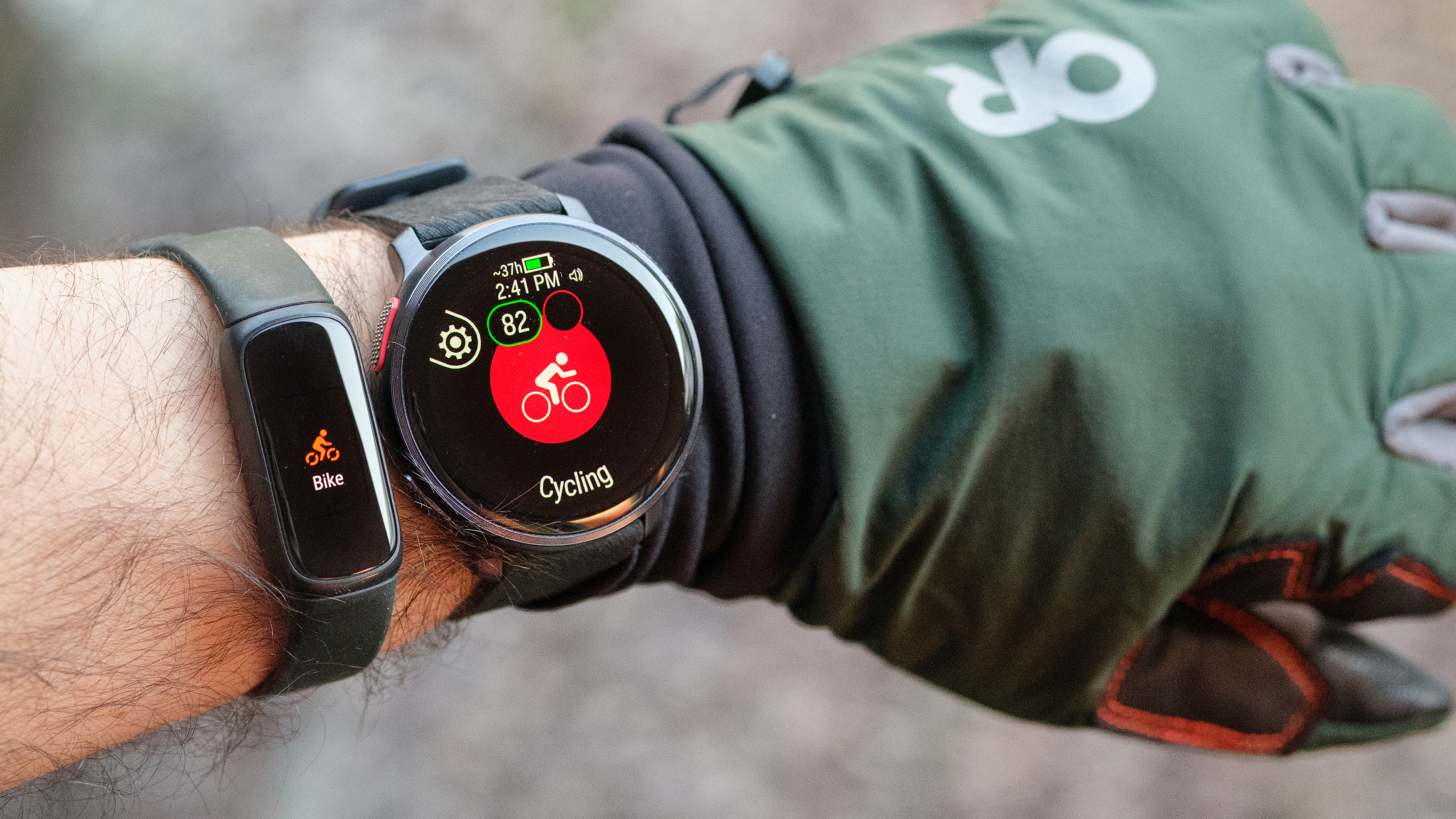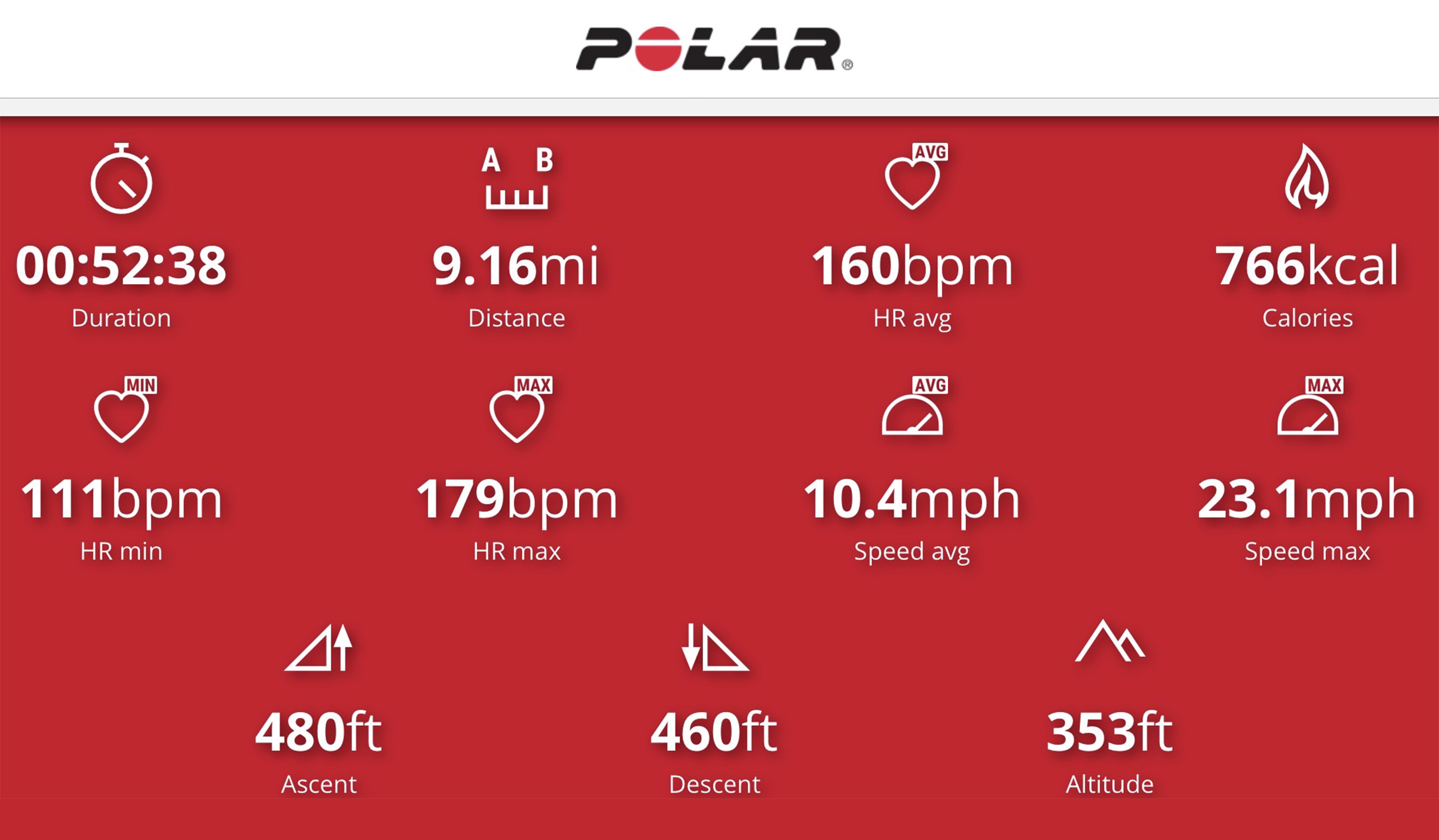I biked 9 miles with the Fitbit Inspire 3 and Polar Vantage V3 — one was more accurate
What's the best tracker for cyclists?

As an avid city cyclist, I’ve lately been asking myself, “What’s the best fitness tracker for analyzing my bike rides?” To find out, I grabbed the two devices nearest to me on my desk and suited up for a chilly December ride.
Those two devices happened to be the Fitbit Inspire 3 — a small and budget-friendly model aimed at casual users — and the Polar Vantage V3, a more advanced fitness watch geared toward hardcore athletes. More importantly, the Fitbit costs ~$100, while the Polar is closer to $600.
Despite the Fitbit’s underdog status, I had faith it could hold its own. After all, the device has proven itself a worthy opponent in past battles with pricier models, like the time it beat the Apple Watch 8 in a 6,000-step accuracy showdown.
Inspire 3 vs. Vantage V3: Stats cyclists care about
Cyclists want similar post-workout stats to runners and hikers. At the end of my ride, I want to know how far I went, how much time I actually spent riding (as opposed to waiting at red lights), my maximum and average speeds, my elevation gain, max and average heart rates and calories burned. Oh, and a map of my route is also a nice touch.
It’s worth noting that while both of these devices have a mode that tracks bike rides, only the Polar has an onboard GPS — the Fitbit piggybacks off of a smartphone's connection. How does this impact our head-to-head test? Read on.
Inspire 3 vs. Vantage V3: Performance
Based in Seattle, Washington, my 9.3-ish mile ride involved roughly 450 feet of elevation gain and took me across no fewer than two drawbridges and past Amazon’s corporate headquarters, an old Ford Model T factory, a busy seaplane airport and plenty of gorgeous city and mountain views. (Okay, it was a little overcast, so I didn't see too much).
For this test, I also ran Strava on my smartphone, as I have in previous head-to-head tests, for an additional point of comparison. With a tracker on each wrist, my Lumos helmet (one of the best bike helmets) strapped snuggly to my head and my bike lights powered up, I peddled out.
Sign up to get the BEST of Tom's Guide direct to your inbox.
Get instant access to breaking news, the hottest reviews, great deals and helpful tips.
| Row 0 - Cell 0 | Fitbit Inspire 3 | Polar Vantage V3 | Strava |
| Time | 52 minutes 50 seconds | 52 minutes 38 seconds | 48 minutes 24 seconds |
| Distance | n/a | 9.16 miles | 9.30 miles |
| Elevation gain | n/a | 480 feet | 451 feet |
| Average speed | n/a | 10.4 mph | 11.5 mph |
| Max speed | n/a | 23.1 mph | 24.5 mph |
| Average heart rate | 159 bpm | 160 bpm | n/a |
| Max heart rate | 181 bpm | 179 bpm | n/a |
| Calories burned | 682 calories | 766 calories | n/a |
I was initially disappointed with the amount of post-ride data provided by the Inspire 3. However, when combined with Strava data, you get a similar level of analysis to the Polar Vantage V3, just not all in one place. That said, the Fitbit data can easily be synced with Strava recordings.
More importantly, across the board, between the two devices and Strava, there isn’t too much discrepancy in the health and fitness data recorded, which shows that all of these tracking methods are pretty darn accurate.
Strava did record a shorter ride time, though. And I suspect that 48 minutes and 24 seconds is much closer to the amount of time I truthfully spent moving on the bike. How do I know this? I also ran a timer for my ride separately, which logged my total workout time at just around 53 minutes.
Inspire 3 vs. Vantage V3: Verdict

Ultimately, the Polar Vantage V3 wins this showdown. It accurately captured and shared all the ride information I care about in one easy-to-digest report.
The Fitbit Inspire 3 was also accurate, but getting a complete picture of my bike ride requires running a secondary app (Strava), followed by syncing the two datasets. This is not hard, but also not ideal.
Catch me rocking the V3 on future bike rides.
More from Tom's Guide

Dan Bracaglia is the Tom’s Guide editorial lead for all things smartwatches, fitness trackers and outdoor gear. With 15 years of experience as a consumer technology journalist testing everything from Oura Rings to instant cameras, Dan is deeply passionate about helping readers save money and make informed purchasing decisions. In the past year alone, Dan has assessed major product releases from the likes of Apple, Garmin, Google, Samsung, Polar and many others.
An avid outdoor adventurer, Dan is based in the U.S. Pacific Northwest where he takes advantage of the beautiful surroundings every chance he gets. A lover of kayaking, hiking, swimming, biking, snowboarding and exploring, he also makes every effort to combine his day job with his passions. When not assessing the sleep tracking and heart rate accuracy of the latest tach gadgets, you can find him photographing Seattle’s vibrant underground music community.
